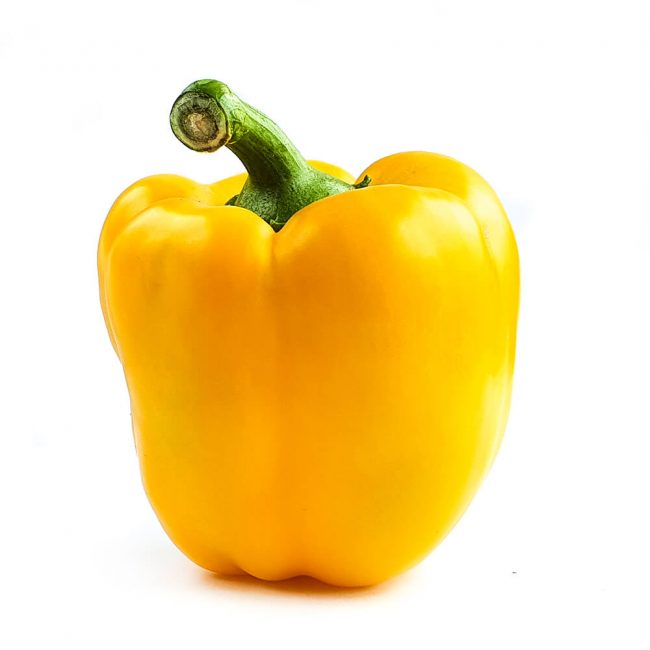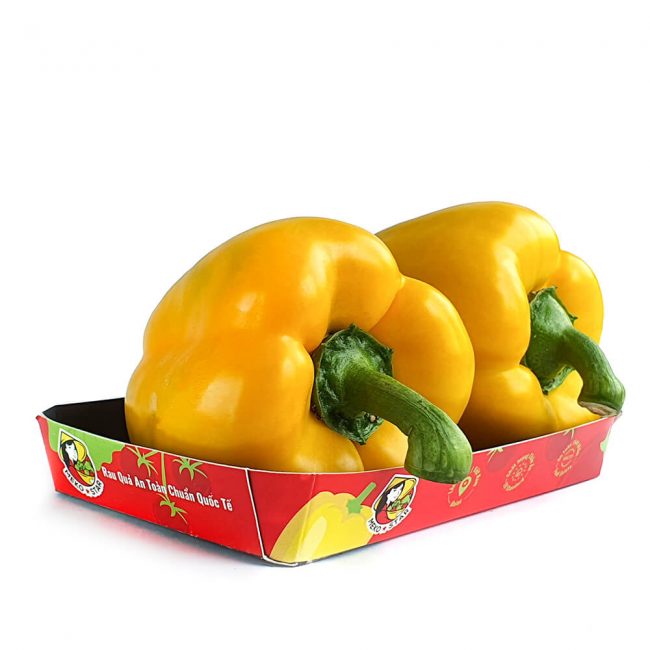


Yellow Bell Pepper
Mekostar’s Yellow Bell Peppers are grown in our Da Lat greenhouses to GLOBALG.A.P. standards. The yellow bell pepper has a shiny yellow skin and sweet crispy flesh with a distinctive flavour. Yellow bell peppers start off green and turn yellow when they are ripe. Mekostar harvests them at the point of maturity to provide the best quality.
Yellow bell peppers are a great source of potassium and vitamin B6. Diets high in potassium can help keep blood pressure at good levels and reduce the risk of stroke, while vitamin B6 keeps the nervous and immune systems healthy.
The mild sweetness of yellow bell peppers can be enjoyed raw, made into salads, cooked or stir-fried to bring out an even more intense flavor.
